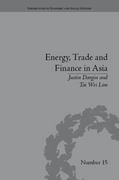going wage for union rail labor on the east coast is $50,000. That is, without the new railroad, these workers would earn $50,000. (a) Very briey dene what is meant by a sunk cost, and what is meant by the 'sunk cost fallacy'. [Go look it up if you do not know] (b) Assuming that the labor can be hired at this going wage, for what values of It should Amtrack build the new railroad? (Assume that Amtrack aims to maximize prots without discounting). (c) Suppose that, if the railroad is built, after it is built the rail union can make a 'take it or leave it' wage demand w to Amtrack to apply just for labor on the new line. The railroad's only choice is to accept to pay the wage demand, w, or close the new line down. What demand will the union make? Given this, if you were Amtrack, for what values of It would you build the new line? Why is your answer different from that in part (b)? Now suppose that the wage demand made after the railroad is built is not a 'take it or leave it' demand but rather part of negotiation. Suppose that, fearing strikes in the transport sector, the government has instituted compulsory arbitration in wage disputes. The arbitrator always follows a twostep approach. First, she disqualies any wage offers lower than the current going wage (that is, such that employees would rather walk away than accept the offer), and also any wage demand that would cause the employer to shut down (that is, such that the employee would rather walk away than accept the demand). Provided the offers and demands survive this test, she then " splits the difference". (d)What wage demands and wage offers will be presented to the arbitrator aer the railroad is built. Given this, if you were Amtrack, for what values of It would you build the new line? Why is your answer different from that in parts (b) and (c)? (e) Issues like this are sometimes called 'holdup' problems. One way to avoid the problem here (under-investment) is to give all the ex post bargaining power to the would-be ex ante investor. (Here this is the employer but in other settings it might be an employee who must decide how much to invest in skills that are specic to a given rm.) Briey list some other ways we see people try to get around hold-up problems. 3. A Patent Race (Dutta) [This question looks at a patent race under very dferent assumptions to the 'duel' we played in class .] Two rms, A and B, are each considering trying to develop a new widget. Whichever rm is rst to develop the new widget wins a patent worth $20 million plus a penny. Developing a new widget involves several 'steps'. The rms alternate moves, with A moving rst, until one of them wins the patent. All moves are observed. In each turn, a rm can choose whether to take 0, 1, or 2 development 'steps'. Taking 0 steps in a turn costs that rm $0. Taking 1 step in a turn costs $4 million. And taking 2 steps in a turn costs $11 million. For simplicity, assume a zero discount rate. Initially, each rm is 4 steps away from completing development. (a) Describe and explain carefully what will happen in this patent race and why. (b) Very briey explain what is the economic rationale for granting 'intellectual property rights' such as patents. What are some disadvantages for society of granting such right







